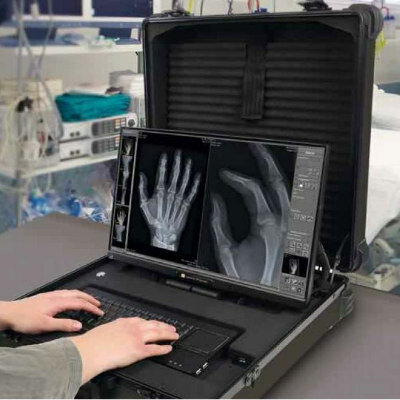Superconductive MRI Offers Silent Scanning Technology
By MedImaging International staff writers
Posted on 24 Mar 2017
A new 1.5T magnetic resonance imaging (MRI) system combines high quality imaging with a patient-friendly examination environment.Posted on 24 Mar 2017
The Hitachi ECHELON Smart was designed to reduce the loud acoustic noise that accompanies an MRI scan by reducing the sound pressure, all without affecting examination time, contrast, image signal to noise ratio (SNR), and spatial resolution. The silent scanning technologies, together with a host of other functions, create a comfortable examination environment for both the operator and the patient, resulting in an enhanced workflow and minimal examination time, without affecting image quality.

Image: The ECHELON Smart MRI with silent scanning technology (Photo courtesy of Hitachi).
Applications include AutoPose scan plane setting, intended to reduce the operator's workload for brain scans and repeat examinations by reducing image deterioration caused by body movement, also known motion artifact; and RADial Acquisition Regime (RADAR), which is intended to reduce motion artifact in cerebral and abdominal examinations, which are affected by involuntary movements such as blood flow and breath. RADAR is also compatible with silent scanning technology, which improves the examination environment for patients with an aversion to MRI examinations.
The ECHELON Smart is preinstalled with an optimum image synthesizer and a high sensitivity 16-channel radio frequency (RF) receiver system powered by a high-speed analog-to-digital converter (ADC), which digitalizes the RF signal and subsequently applies noise suppression to obtain high quality images. Other features include a low energy consumption function that reduces running costs significantly when compared to conventional systems, which must be continuously cooled to cryogenic temperatures during operation in order to prevent the liquid helium from evaporating.














